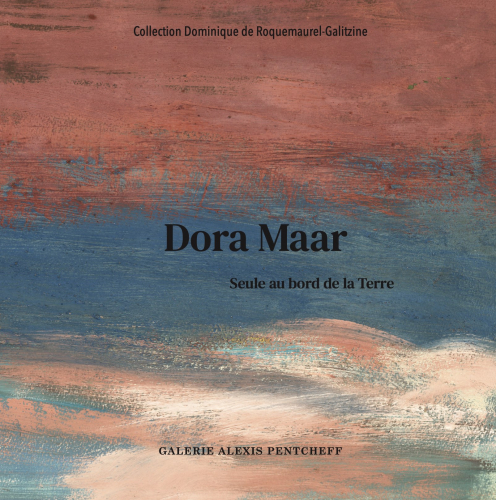
An exceptional Dora Maar exhibition in preparation in Marseille in 2022
Dora Maar, works on paper presented at the Pentcheff Gallery
From March 10, 2022, the Alexis Pentcheff Gallery will present in its premises in Marseille an exceptional exhibition dedicated to the painting of Dora Maar. More than one hundred and sixty original works by the artist will be presented for sale, created between the 1960s and the end of her life, during a period when, separated from Picasso with whom she lived for nearly ten years, she gradually withdrew from the world to paint and pray. Dora Maar, who was in her youth photographer, close to the surrealists and movements of artistic avant-gardes, devotes herself to the painting on the advice of Picasso. In the secrecy of its Parisian workshop or in that its house of Ménerbes, in in the Vaucluse, she creates intriguing, poetic and abstract works. Works by which by which she dissociates herself and detaches herself from the influence of her former lover. Reached us, as a kind of time capsule, this set of works allows us to better know the painted work of the artist and to apprehend a research that she has not yet done. research that she did not stop leading since her surrealist works of the years 1930. of the years 1930.
This exhibition is devoted to the works on paper of Dora Maar, works, for the most part exploratory, made during a period of voluntary reclusion that lasted more than forty years.
It is the result of an intense preparation and a real attachment, in the course of our research, to the character of Dora Maar.
Fascinating and moving Dora Maar. We wanted to learn more about her than her legend suggested, to see beyond her most famous faces: that of the muse, photographed and painted, that of the abandoned woman, which are those we are most often offered.
Recent and important exhibitions, organized at the Centre Pompidou and then at the Tate Modern in London in 2019 and 2020, have paid homage to her, highlighting in particular the place of her work in the surrealist movement.
But do we remember that the first exhibition devoted to Dora Maar in France took place in Marseille, at the Musée de la Vieille-Charité, in the spring of 2002? It originated in a retrospective that had been held in 1995, during the artist's lifetime, at the Bancaixa Foundation in Barcelona, under the impetus of Victoria Combalia. This should have followed at the Centre Pompidou, but the unpredictable artist thwarted the established program on the pretext that the invitation to the opening did not please her...
It was only after his death that the exhibition was shown in France, finally in Marseilles, and in the meantime, knowledge of the artist's career had been enriched, in particular through the study of private documents that had been revealed by the auction of his estate.
Dora Maar in her studio in Paris and Ménerbes, her works unveiled
Exactly twenty years later, the mystery of Dora Maar remains.
If her photographic work is now well known (since a set consisting of 1900 of her negatives and 300 prints was acquired in 2004 by the state and is kept at the Centre Pompidou), her painted work is less known. First, because Dora Maar painted for a long time as a recluse and gradually did not admit anyone to her home, let alone her studio. Apart from that of her friend James Lord, who had access to the studio in the 1950s and then in 1969 and 1980, no other testimony, it seems, sheds light on what may have been the chronology of her production. On the other hand, because after the end of the 1950s, she no longer really exhibited in galleries, while she continued to work, however, with rigor and determination. It is thus a very solitary path that she followed, almost ascetic. Lord has often wondered about the ambivalence of the artist, who burned to be recognized and admired, while refusing to give herself up to the world. She did not particularly leave any writings or correspondence that could shed light on the evolution of her pictorial research. Finally, if her paintings, which were dispersed in the context of the sale of her studio collection, were for the most part reproduced in an auction catalog, this was not the case for the hundreds of preparatory works, works on paper and sketchbooks from the different periods, which were collected in boxes to be sold, without having been individually photographed or even inventoried beforehand.
By recovering intact, more than twenty years later, one of these makeshift sets assembled at the time of the sales of Dora Maar's studio collection, we have attempted, through this catalog and before these works are definitively dispersed, to listen to what they could teach us, We have tried to learn more about Dora Maar's creative process, about the direction of her research and what seems to have governed the realization of these works on paper, which have the advantage of being more spontaneous and daring than her paintings on canvas. It seemed to us that there was more to look for, in the sum of these rediscovered works, than their apparent formal simplicity suggested; that they perhaps contained the essence of a personal research far from being devoid of interest.
Discover the works of Dora Maar offered for sale in this exhibition in Marseille
